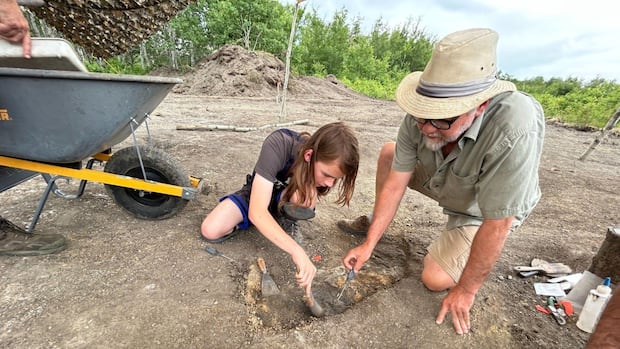Twice a year, a patrol team scrutinizes barns, straw bales and grain storage bins along a 600-kilometre stretch of the Alberta-Saskatchewan boundary. They’re looking for rats, continuing a 75-year mission to stop the rodents from making themselves at home in the province.
“My grandfather,” says Lincoln Poulin, the president of Poulin’s Pest Control, “was known as the man that killed 10 million rats.”
Napoleon Poulin invented a rodenticide called Poulin’s Rat Doom and was a key figure in the early days of Alberta’s rat control program, established in 1950 after Norway rats were discovered on an Alberta farm.
The rodents, thought to originate in China, first arrived on the east coast of North America in 1775 and gradually spread west, travelling about 24 kilometres per year and arriving in Saskatchewan in the 1920s.
By 1959, the number of infestations in Alberta increased to 573. But after 1959, they plummeted, reaching zero by 2003, according to the Alberta government.
Outbreaks happen — but not often
Karen Wickerson, pest specialist with Alberta Agriculture and Irrigation, administers the Alberta Rat Control Program — meaning she’s known in some circles as Alberta’s rat lady.
If a rat is found, the patrol sets up traps, bait stations and cameras. The goal is to get the rodents before they start a family and spread, said Wickerson.
The rat control zone stretches along Alberta’s eastern boundary between Cold Lake, Alta., to the U.S. border with Montana.
The patrol’s focus is on eastern Alberta because it’s hard for rats to get over the mountains in the west, Montana has a very low rat population in the south and the north is too cold and sparsely populated, said Wickerson.
Alberta’s rat control program has been in place for 75 years. The program, established in 1950, has workers patrol the border between Saskatchewan and Alberta year-round.
While there are occasional outbreaks — like the 2023 outbreaks at two recycling plants in Calgary — they’re rare.
Usually, rats come into Alberta by chance.
“They can be hitchhikers on a shipment of grain,” said Shelby Oracheski, agricultural fieldman with the Municipal District of Wainwright, which is about 50 kilometres west of the Saskatchewan boundary.
“With any invasive species, the earlier you detect them, the more effective you can be to get rid of them.”

The problem with rats
Bryan Skinner’s family started their mixed grain and beef farm in 1950 — the same year Alberta’s rat program got started — near the village of Chauvin, about 10 kilometres west of the Saskatchewan boundary.
Without Alberta’s rat patrol program, the rodents could cause a lot of damage to his farm, he said.
“Anything time a rat wrecks your feed, you obviously can’t feed it to your livestock, so it all becomes waste,” he said.
It can go 15 years between rat sightings on his farm, said Skinner.

Rats will chew on electrical wiring, causing damage to homes and other structures. They may also carry up to 50 different pathogens and parasites that can be passed to humans.
According to a study published earlier this year in Science Advances, rats in the United States cause an estimated $27 billion US in damages annually to infrastructure, agricultural yields and contaminated food supplies.
While Alberta does promote itself as being rat-free, it does have a native rat — the bushy-tailed woodrat, which is also known as a packrat. It’s found in the Rocky Mountains and southern parts of the province.
Packrats can damage buildings by constructing stinky nests, said Wickerson, but they are not as much of a concern as the invasive Norway rat.
Property owners can choose to control packrats, but Norway rats must be controlled according to Alberta’s laws.
It’s illegal to keep pet rats in Alberta.
Radio Active8:50We go looking for rats
This is a big year for Alberta because we are one of the only places in the world with no rats. And the program that helps keep them out is turning 75 years old. Our Liam Harrap went on rat patrol with the province last week and joins us now to explain.
The world is becoming rattier
Today, Norway rats are found on every continent outside of Antarctica.
A recent study published in Science Advances, found rat populations are exploding globally in cities like Washington, D.C.
The study found climate change and a growing human population were behind the increasing number of rats. Rats thrive in warmer conditions, the study noted, while human populations mean more garbage and homes for rats to live in.
Cities with fewer green spaces also saw a greater increase in rats.

In 2023, New York City appointed a rat czar to tackle the problem.
However, some places have managed to become rat-free in recent years. In 2018, South Georgia got rid of all its rats after having them for 250 years. It’s known as the world’s largest rodent eradication project.
The key to Alberta’s triumph was getting rid of rats when they first arrived, said Wickerson.
“We can’t put out little signs or rat fences at the border,” she said.
“The thing is when they do get in, we don’t let them establish.”






